When it comes to household appliances, dehumidifiers play a crucial role in maintaining a comfortable and healthy living environment by reducing excess moisture in the air. But have you ever stopped to wonder about the inner workings of your dehumidifier—specifically, whether it uses Freon or some other type of refrigerant? This question is more than just a curiosity; it directly relates to the appliance’s efficiency, environmental impact, and safety. In this article, we’ll dive into the world of refrigerants used in dehumidifiers, debunk common misconceptions, and provide you with everything you need to know to make informed decisions about your appliance. Whether you’re a current owner, a prospective buyer, or simply curious about how dehumidifiers operate, this guide will equip you with valuable insights to better understand your device and its role in your home.
What is a Dehumidifier and How Does it Work?
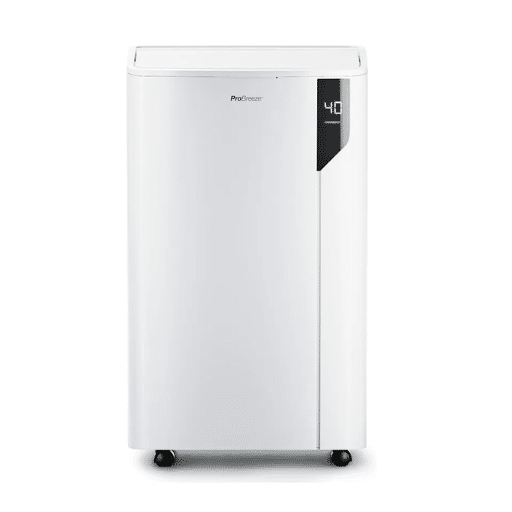
A dehumidifier is a device used at home primarily to reduce the moisture in the air, thereby making the indoor atmosphere comfortable and healthy. The appliance works by drawing in humid air, which after being passed over cold coils where moisture condenses into droplets, is released back into the room as drier air. The conditioner collects water in the form of a condensate which is either stored in a reservoir or drained away via a hose. Dehumidifiers helps in effectively getting rid of excess humidity that aids in the growth of mold, mildew, and allergens. They also protects furniture, walls and other belongings from damage due to moisture.
How Do Dehumidifiers Work to Remove Moisture?
Dehumidifiers utilize advanced technology to effectively remove excess moisture from indoor air. They typically operate using refrigeration or desiccant systems. Refrigeration-based dehumidifiers work by pulling in damp air using a fan and directing it over cold evaporator coils. This process cools the air, causing condensation to form and collect in the unit’s reservoir or drain system. Desiccant dehumidifiers, on the other hand, use absorbent materials like silica gel to draw moisture from the air.
The effectiveness of a dehumidifier is often measured by its moisture removal capacity, typically expressed in pints per day (PPD). For example, a standard home dehumidifier can remove anywhere from 20 to 70 PPD, depending on the model and environmental conditions. Modern units come equipped with features like built-in hygrometers to monitor humidity levels, auto-restart functions, and energy-efficient modes certified by ENERGY STAR.
Research shows that maintaining indoor humidity levels between 30-50% is ideal for comfort and health. High humidity can increase the risk of mold growth and dust mites, both of which thrive in moisture-rich environments. A dehumidifier can reduce these risks while improving air quality, creating a safer and more pleasant living space.
Understanding the Type of Dehumidifier You Have
Dehumidifiers come in various types, each designed to suit specific needs and environments. The two most common types are refrigerant (or compressor-based) and desiccant dehumidifiers. Refrigerant dehumidifiers work by drawing in moist air and cooling it, causing the water vapor to condense and collect in a tank. These are highly effective in warm and humid climates, as they perform best in temperatures above 60°F (15°C). On the other hand, desiccant dehumidifiers use a material like silica gel to absorb moisture directly from the air. They are lighter, quieter, and ideal for cooler conditions or spaces requiring low noise operation.
For larger spaces like basements or living rooms, whole-house or high-capacity dehumidifiers may be necessary. These units are capable of removing significant amounts of moisture daily, sometimes up to 50-70 pints, making them suitable for persistent humidity issues. Portable models, however, are convenient for smaller spaces and can be easily moved between rooms. Additionally, smart dehumidifiers equipped with Wi-Fi connectivity allow users to monitor and control settings remotely, providing a dynamic solution for modern households.
When selecting the right dehumidifier, it’s essential to factor in the room size, the level of humidity in the environment, and specific features like built-in hygrometers or automatic shut-off functions to ensure both efficiency and convenience.
Exploring Refrigerant Dehumidifier vs. Desiccant Dehumidifier
When deciding between a refrigerant dehumidifier and a desiccant dehumidifier, understanding their mechanisms, efficiency, and suitability for different environments is crucial. Both types serve the same primary purpose—removing moisture from the air—but they achieve it through different processes and excel under specific conditions.
1. How They Work
- Refrigerant Dehumidifiers: These units use coils that are cooled by a compressor to condense moisture from the air. Warm, humid air is drawn into the machine, where it meets the cold coils, causing water vapor to collect and drain away. This process makes them effective in warm and moderately humid environments.
- Desiccant Dehumidifiers: Instead of cooling, these units use moisture-absorbing materials like silica gel to extract humidity. Air passes over the desiccant, and the absorbed moisture is expelled when the material is heated and regenerated. This design is well-suited for colder, less humid settings.
2. Efficiency and Performance
- Refrigerant Dehumidifiers: These are most energy-efficient at temperatures above 60°F (15°C) and relative humidity levels of 50% or higher. However, their efficiency may drop in colder conditions as lower temperatures can cause the coils to freeze, impeding performance.
- Desiccant Dehumidifiers: These perform consistently across a broader range of temperatures, even as low as 33°F (1°C). While they may consume more energy than refrigerant models, their reliable performance in cold spaces like basements or warehouses often makes them the better choice under such conditions.
3. Noise Levels
Refrigerant dehumidifiers typically produce more noise due to their compressor systems. Desiccant models tend to run quieter, making them ideal for noise-sensitive environments like bedrooms or office spaces.
4. Energy Consumption and Cost
Refrigerant dehumidifiers generally consume less energy when used in optimal warm and humid conditions, which can result in lower operational costs. On the other hand, desiccant dehumidifiers, though more energy-intensive, offer unparalleled performance in areas with challenging environments where refrigerant units may falter.
5. Applications and Use Cases
- Refrigerant Models: Best suited for homes, offices, or climates where higher temperatures and humidity prevail. They are cost-effective for everyday household use.
- Desiccant Models: Ideal for colder climates, industrial applications, and spaces where efficient operation in low humidity is required, such as storage units, boats, or RVs.
Do Dehumidifiers Contain Freon or Other Refrigerants?
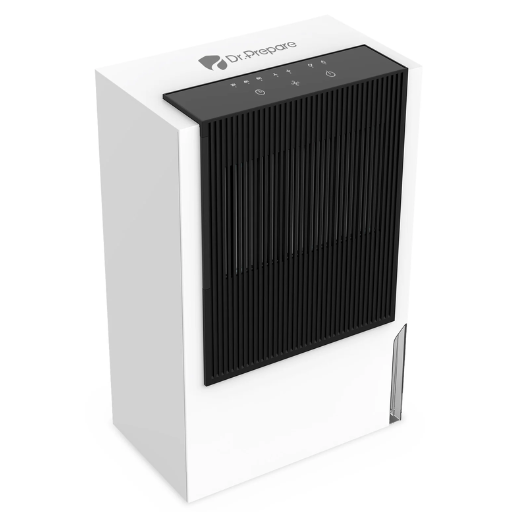
Yes, many dehumidifiers contain refrigerants, including Freon, to assist in the process of cooling the air and removing moisture. Freon, a brand name for certain chlorofluorocarbons (CFCs) or hydrochlorofluorocarbons (HCFCs), was commonly used in older models. However, due to environmental regulations, modern dehumidifiers now use more eco-friendly refrigerants such as R-410A or R-32. These refrigerants are less harmful to the ozone layer while maintaining effective moisture removal performance. Always check the product specifications to see which refrigerant is used in your dehumidifier.
Types of Refrigerants Like Freon Used in Dehumidifiers
Refrigerants play a crucial role in the functionality of dehumidifiers, and selecting the right type ensures both efficiency and environmental responsibility. Below is an overview of common refrigerants used in modern dehumidifiers, along with their characteristics and environmental impact.
1. R-410A
R-410A is a widely used refrigerant in many appliances, including dehumidifiers and air conditioners. It is a hydrofluorocarbon (HFC) that does not deplete the ozone layer, offering a greener alternative to older refrigerants like CFCs and HCFCs. However, it has a relatively high Global Warming Potential (GWP), with a value of 2,088, which raises concerns regarding its contribution to climate change. Due to its high efficiency, R-410A remains a popular choice in many countries for residential and commercial dehumidifiers.
2. R-32
R-32 is a more recent innovation in refrigerant technology and is increasingly favored for its environmental benefits. It has a significantly lower GWP of 675, making it roughly three times less impactful on global warming than R-410A. R-32 is also highly energy-efficient, which helps reduce electricity consumption while maintaining optimal performance. Its lower toxicity and excellent cooling capabilities make it an ideal option for new-generation dehumidifiers.
3. R-134a
R-134a is another HFC refrigerant commonly used in older dehumidifier models. While it does not harm the ozone layer, its GWP of 1,430 makes it less environmentally friendly than newer solutions like R-32. This refrigerant is gradually being phased out in certain regions due to environmental regulations targeting high-GWP substances.
4. R-290 (Propane)
R-290, or propane, is a natural refrigerant with a very low GWP of just 3, making it one of the most environmentally friendly options available. It is non-toxic and highly efficient; however, it is also flammable, which sometimes limits its widespread use. R-290 is gaining traction in eco-conscious markets and is often used in compact or portable dehumidifiers.
5. R-600a (Isobutane)
Similar to R-290, R-600a is a natural refrigerant with an extremely low GWP of 3. It is an excellent option for small-scale dehumidifiers due to its high energy efficiency and negligible impact on the environment. However, like R-290, its flammability requires careful handling and adherence to specific safety standards.
Impact of Freon on the Ozone Layer
Freon, a group of chlorofluorocarbons (CFCs) and hydrochlorofluorocarbons (HCFCs), has a significant negative impact on the ozone layer. These compounds, widely used as refrigerants, aerosol propellants, and in foam production, release chlorine and bromine atoms when exposed to ultraviolet (UV) radiation in the stratosphere. These atoms act as catalysts in ozone depletion, breaking down ozone (O₃) molecules into oxygen (O₂), which diminishes the protective ozone layer.
Studies have shown that a single chlorine atom from Freon can break down thousands of ozone molecules before it is rendered inactive. This depletion has created areas of especially thin ozone, commonly referred to as “ozone holes,” with the Antarctic ozone hole being one of the most alarming examples.
The depletion of the ozone layer is particularly concerning because it allows greater quantities of harmful UV-B radiation to reach the Earth’s surface. This increased UV exposure has been linked to higher risks of skin cancer, cataracts, and immune system suppression in humans. Additionally, it can negatively impact ecosystems, including phytoplankton populations in oceans, which form the foundation of aquatic food chains.
Efforts to address this issue include the global adoption of the Montreal Protocol in 1987, which mandates the gradual phase-out of ozone-depleting substances (ODS), including Freon. Recently, amendments to the protocol, such as the Kigali Amendment, have targeted the reduction of HCFCs while promoting the adoption of environmentally friendly refrigerants like hydrofluorocarbons (HFCs) and natural refrigerants. These actions have reportedly contributed to the recovery of the ozone layer, which is projected to return to pre-1980 levels by the 2060s if current trends continue.
How to Safely Dispose of Dehumidifiers?
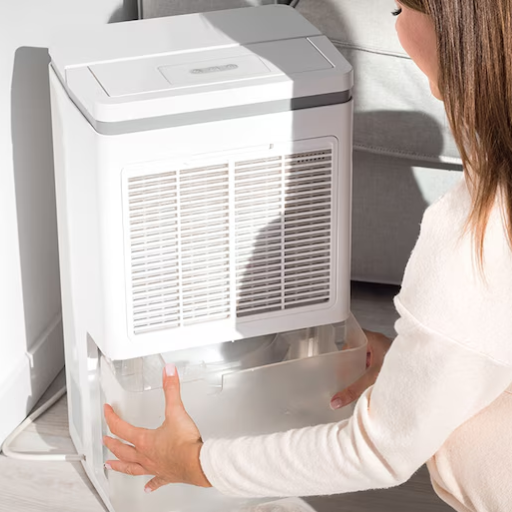
Disposing of a dehumidifier safely requires attention to its components and environmental impact. First, check if your dehumidifier contains refrigerants, as these substances need to be handled properly to prevent environmental harm. Many local recycling programs or waste management facilities accept dehumidifiers and ensure safe removal of refrigerants.
Before disposal, confirm with your city or county’s waste disposal guidelines to determine the nearest drop-off location or if a special collection service is available. Alternatively, some retailers or manufacturers offer take-back programs for old units. Avoid throwing a dehumidifier in regular household trash to ensure compliance with environmental safety regulations.
Steps to Dispose of a Dehumidifier Properly
- Check Local Disposal Regulations
Before proceeding, research your local recycling and disposal regulations. Many areas have specific rules for appliances containing refrigerants like dehumidifiers. Understanding these laws ensures proper disposal and avoids legal penalties.
- Drain the Dehumidifier
First, empty the water collection tank and allow the unit to dry completely. This prevents spills and mold growth during transport or storage.
- Locate an EPA-Certified Recycling Facility
Find a facility certified by the Environmental Protection Agency (EPA) or your area’s equivalent. These facilities are equipped to extract refrigerants in compliance with environmental standards. You can use the EPA’s Responsible Appliance Disposal (RAD) program directory for guidance.
- Use Retailer Recycling Programs
Some retailers offer take-back or trade-in programs for old appliances. Stores like Best Buy or Home Depot may provide free or low-cost recycling services when you purchase a new unit from them.
- Contact Municipal Waste Services
Many cities and towns provide bulk waste collection services or organize special hazardous waste disposal events. Check with your local waste management department to see if these programs accept dehumidifiers.
- Hire a Certified Technician
If you are unsure about handling refrigerants, hire a qualified technician. These certified professionals will decommission the dehumidifier, safely extract the refrigerant, and prepare it for recycling or disposal.
- Donate Functional Units
If your dehumidifier is still in good working condition, consider donating it to a charity, thrift store, or community organization. This extends its lifespan and benefits someone else.
- Research Manufacturer Options
Many manufacturers support recycling initiatives. Contact the dehumidifier’s manufacturer to inquire if they provide a take-back program or offer discounts when returning old units for proper disposal.
- Avoid Illegal Dumping
Never dispose of a dehumidifier in your regular trash or leave it on the curb without confirmation from your waste handling service. Improper disposal of appliances with refrigerants poses serious environmental risks and may lead to fines or penalties.
- Spread Awareness
Encourage others to follow environmentally responsible disposal practices. Share your experience or resources to help others safely recycle or discard appliances like dehumidifiers.
By following these detailed steps, you can dispose of your dehumidifier responsibly, ensuring compliance with regulations while contributing to environmental preservation.
Why You Should Consider a Recycling Center
Recycling centers play a critical role in reducing waste and supporting environmental sustainability. By taking your dehumidifier to a certified recycling center, valuable materials such as copper, aluminum, and plastics can be recovered and reused. These materials are often components of dehumidifiers and can otherwise end up in landfills, where they may take decades to break down and potentially release harmful substances into the environment.
According to the EPA, recycling one ton of steel, commonly found in appliances, can save 2,500 pounds of iron ore, 1,400 pounds of coal, and 120 pounds of limestone. Additionally, recycling centers are equipped to handle refrigerants like Freon, which can deplete the ozone layer if improperly disposed of, ensuring these substances are safely managed to prevent environmental harm.
Many recycling centers also operate in alignment with strict governmental and industry regulations to minimize environmental impact. Some centers even offer take-back programs for appliances, making the process more convenient and accessible. By choosing a recycling center, you not only ensure the safe disposal of your dehumidifier but also contribute positively to the circular economy, where resources are reused and conserved effectively.
How to Recharge a Dehumidifier?
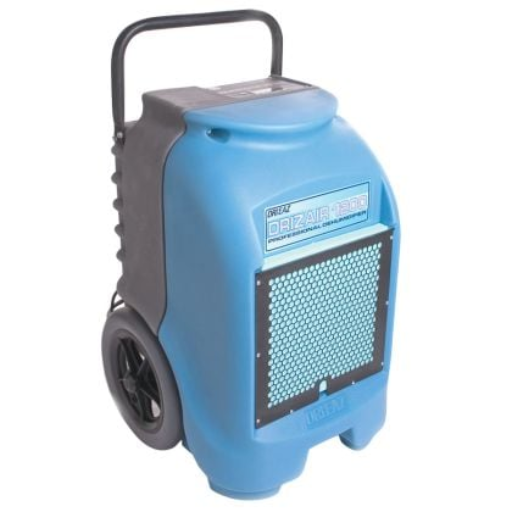
Recharging a dehumidifier typically pertains to units that use a rechargeable desiccant or similar material instead of a refrigerant system. To recharge such a dehumidifier, follow these steps:
- Check the User Manual: Refer to the product’s manual for specific instructions regarding recharging, as processes can vary by model.
- Inspect the Indicator: Most desiccant dehumidifiers have an indicator that changes color when recharging is needed.
- Recharge the Desiccant: Plug the unit into a power outlet if it features an internal heater or follow manual instructions to remove and recharge the desiccant pack. Usually, this involves setting the desiccant in a warm, dry area or using heat for a stated period.
- Reassemble and Test: Once recharged, reassemble the unit and check its operation to ensure effective performance.
For refrigerant-based dehumidifiers, professional servicing might be required as they do not require “recharging” in the traditional sense—handling refrigerant requires certified expertise.
When to Recharge a Dehumidifier?
Recharging a dehumidifier is typically necessary when you notice a decline in its performance. Key signs that your dehumidifier may need recharging include reduced water collection, persistent humidity in the space it’s meant to dehumidify, or the unit running non-stop without effectively lowering moisture levels. For desiccant-based models, the need to recharge often aligns with the drying agent’s saturation. Manufacturers usually provide a recommended timeline for maintenance, but this can vary depending on the specific conditions of use, such as high humidity environments or continuous operation.
Studies indicate that the average lifespan of a desiccant before needing recharging falls between 6 to 12 months of regular use. For refrigerant-based dehumidifiers, performance issues could also result from refrigerant leaks or compressor problems, and these units typically last 5-10 years with proper maintenance. Users should monitor the energy consumption of their devices, as a sudden increase could signal inefficiency and the need for servicing. It is also a good practice to clean filters and coils regularly to ensure optimal performance before considering recharging or advanced repairs. Always follow the maintenance frequency suggested in the user manual, as some models might require specific attention under contrasting conditions.
DIY vs. Professional HVAC Services
When it comes to HVAC maintenance and repairs, deciding between a do-it-yourself approach and hiring professional services depends on the complexity of the issue, the cost, and the risks involved. Performing simple tasks like replacing air filters, cleaning vents, or checking thermostat settings can often be managed by homeowners and contributes to improving HVAC efficiency. For example, regularly replacing air filters can lower energy consumption by up to 15%, ensuring smooth system operation.
However, more advanced tasks—such as refrigerant recharging, electrical diagnostics, or identifying system leaks—require specialized knowledge and tools. Attempting these without proper expertise risks further equipment damage or even personal safety hazards. Data shows that professionally serviced HVAC systems can last approximately 40% longer than those maintained improperly, which underlines the importance of expert care for complex repairs and preventative maintenance.
Another factor to consider is cost. While DIY fixes save money in the short term, professional servicing ensures that systems operate at peak efficiency, which can reduce long-term energy costs significantly. For example, energy-efficient HVAC systems maintained by licensed technicians can save homeowners between 5% and 20% annually on utility bills. Additionally, many professionals offer warranties that cover their work, providing extra assurance and protection against unforeseen breakdowns.
Weighing these factors carefully allows homeowners to make informed decisions to balance cost-effectiveness with optimal system performance and safety.
Exploring the Environmental Impact of Dehumidifiers
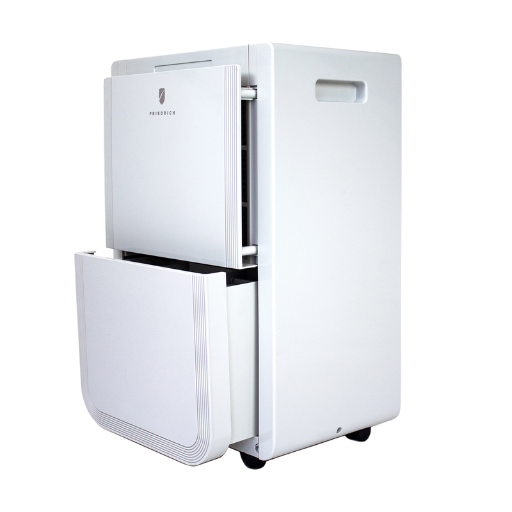
Dehumidifiers can impact the environment in several key ways. Their energy consumption is one of the most significant factors, as frequent use can contribute to higher electricity demand, which may result in increased greenhouse gas emissions if the electricity is generated from non-renewable sources. Additionally, dehumidifiers that use refrigerants can pose environmental concerns if these substances are not properly disposed of, as some refrigerants have a high global warming potential. To minimize environmental impact, choosing an energy-efficient model certified by ENERGY STAR and ensuring proper maintenance and disposal practices are essential.
Dehumidifiers and Air Quality Improvement
Dehumidifiers play a crucial role in improving indoor air quality by maintaining optimal humidity levels, typically between 30% and 50%, as recommended by the Environmental Protection Agency (EPA). High humidity levels can promote the growth of allergens such as mold, mildew, and dust mites, which are common triggers for respiratory issues and allergies. By reducing excess moisture, dehumidifiers help create an environment less conducive to these pollutants, leading to cleaner, healthier air.
Recent studies show that indoor spaces with controlled humidity levels contribute significantly to overall health and wellness. For example, maintaining relative humidity below 50% can reduce mold growth by up to 78%. Furthermore, controlling moisture levels can also protect furniture, wooden structures, and electronics from damage caused by excess humidity. Advanced models now feature built-in air filters that not only dehumidify but also capture airborne particles like pollen and pet dander, enhancing air quality further.
Innovations in dehumidifier technology have made units more efficient and environmentally friendly. Modern dehumidifiers consume less energy, with many models qualifying for ENERGY STAR certification. For example, ENERGY STAR-rated dehumidifiers use 15% less energy compared to conventional models, effectively reducing both operational costs and environmental footprint. When integrated with smart home systems, dehumidifiers can automatically adjust settings based on real-time humidity readings, ensuring precision and sustainability.
By addressing moisture-related issues and contributing to healthier indoor environments, dehumidifiers serve as a valuable tool for improving air quality, particularly in areas prone to high humidity or seasonal dampness.
The Role of EPA Regulations in Home Appliances
The Environmental Protection Agency (EPA) plays a crucial role in shaping the performance and environmental impact of home appliances by establishing regulatory standards designed to enhance energy efficiency and reduce harmful emissions. Programs like ENERGY STAR®, a voluntary initiative managed by the EPA, help consumers identify appliances that meet stringent energy efficiency criteria without compromising performance. For instance, ENERGY STAR-certified dehumidifiers are designed to remove moisture using approximately 15% less energy compared to non-certified models, which translates to significant savings on electricity bills over time.
Furthermore, the EPA enforces guidelines surrounding the use of refrigerants in appliances such as air conditioners and dehumidifiers, aiming to reduce substances that contribute to ozone depletion and climate change. The latest updates encourage the adoption of low-global-warming-potential (GWP) refrigerants, advancing a global shift toward sustainability.
Data shows that appliances with enhanced energy efficiency standards have collectively saved American consumers more than $500 billion in utility costs since their implementation. Additionally, these regulations have led to a reduction of over 2.5 billion metric tons of greenhouse gas emissions, demonstrating their substantial environmental impact. Through continued advancements and stringent oversight, the EPA ensures that modern appliances not only meet consumers’ needs but also align with broader goals of environmental stewardship and resource conservation.
Choosing the Right Dehumidifier Brands for Your Needs
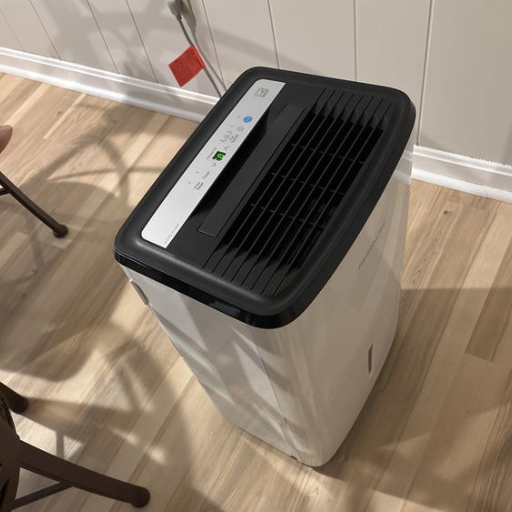
When selecting a dehumidifier brand, focus on reliability, efficiency, and features that align with your specific needs. Top brands like Frigidaire, hOmeLabs, and Honeywell are widely recognized for their performance, energy efficiency, and durability. Frigidaire offers models with precise humidity controls, making it ideal for maintaining consistent indoor air quality. HomeLabs is praised for its user-friendly designs and high capacity, suitable for larger spaces or areas with significant humidity issues. Honeywell provides compact and portable options, perfect for smaller rooms or tight spaces. To ensure you make the best choice, look for Energy Star-rated models to save on electricity costs and check customer reviews for insights into reliability and performance.
Top Dehumidifier Brands to Consider
- Frigidaire
Frigidaire is renowned for its reliable and durable dehumidifiers, offering high moisture removal capacities perfect for large spaces. Their models are often equipped with easy-to-use controls, washable filters, and convenient continuous drain options. Some top-rated models, like the Frigidaire FFAD5033W1, remove up to 50 pints of moisture per day and have received widespread praise for their energy efficiency and quiet operation. These features make Frigidaire a trusted choice for tackling excess humidity in homes.
- hOmeLabs
Known for innovative and aesthetically pleasing designs, HomeLabs delivers high-quality dehumidifiers that also focus on functionality. Their dehumidifiers, like the hOmeLabs HME020031N model, are capable of removing up to 50 pints of moisture daily and come with features such as auto-defrost, a 24-hour timer, and user-friendly touch panels. HomeLabs has consistently earned outstanding reviews for affordability without compromising on performance.
- GE Appliances
GE dehumidifiers are celebrated for their advanced technology and durability. Models such as the GE APER50LZ are designed with smart features, including compatibility with Wi-Fi for remote monitoring through a mobile app. GE dehumidifiers are also known for their large-capacity water tanks, adjustable settings, and whisper-quiet operation, making them ideal for bedrooms and living areas.
- Honeywell
Honeywell dehumidifiers combine efficiency and practicality, offering powerful performance for spaces of various sizes. Popular models, such as the Honeywell TP70AWKN, feature digital humidistat controls, continuous drain options, and energy-saving functionality. Honeywell’s brand reputation for simplicity and effectiveness makes it an excellent choice for both households and offices seeking dependable humidity control.
- Vremi
Vremi provides compact yet powerful dehumidifiers that prioritize ease of use. Their modern designs blend seamlessly with home décor, and models like the Vremi Moisture Maniac can handle moisture levels in medium to large rooms with ease. Features such as auto-shutoff, reusable filters, and straightforward settings increase convenience and efficiency, earning Vremi steady popularity among budget-conscious customers.
By choosing one of these respected brands, you can effectively manage indoor humidity levels, improve air quality, and protect your living space from potential mold and mildew damage. Always select a model suited to your specific room size and climate conditions for the best results.
Factors to Consider in a Whole-House Dehumidifier
When selecting a whole-house dehumidifier, several critical factors should be evaluated to ensure optimal performance and suitability for your home. Below is a detailed list of essential considerations:
- Capacity and Coverage Area
The dehumidifier’s capacity, measured in pints per day, determines how much moisture it can remove. Choose a model designed to handle the square footage of your home. For example, a unit with a 70-pint capacity is suitable for a 4,500 sq. ft. area, while smaller models may work better for compact spaces.
- Energy Efficiency
Look for units with an ENERGY STAR® certification, as these consume less energy without compromising performance. Energy-efficient models can lower utility bills while effectively controlling humidity levels.
- Installation Requirements
Whole-house dehumidifiers can be standalone units or integrated into your HVAC system. Consider the complexity and cost of installation, whether you need professional help, and whether your current HVAC setup can accommodate the device.
- Humidity Control Features
Check for precise humidity controls such as digital humidistats and auto-adjustment settings. These features allow you to maintain the ideal relative humidity range of 30–50%, ensuring comfort and preventing mold growth.
- Noise Levels
Some dehumidifiers can be quite loud, especially larger models. Look for units with noise ratings under 50 decibels if quiet operation is important for your home environment.
- Drainage Options
Whole-house models typically feature continuous drainage systems, but it’s important to ensure compatibility with your plumbing. Some devices also come with built-in pumps for draining over long distances or vertically into sinks or basins.
- Maintenance and Filter System
Regular maintenance, such as cleaning or replacing filters, is crucial for long-term performance. Opt for models with washable or reusable filters to reduce upkeep costs.
- Climate Suitability
Consider units designed to operate effectively in your climate. For instance, dehumidifiers with low-temperature operation are essential for colder environments where frost might form on coils.
- Brand Reputation and Warranty
Select products from reliable manufacturers with positive customer reviews. Additionally, prioritize models that come with comprehensive warranties covering parts and labor for peace of mind.
- Cost and Budget
Whole-house dehumidifiers can be a significant investment, with prices ranging from $1,000 to $3,000, including installation. Calculate the upfront cost alongside expected long-term savings on energy bills and home repairs.
Taking these factors into account will help you choose a whole-house dehumidifier tailored to your specific needs, ensuring a healthier and more comfortable home environment.
Reference Sources
-
Design Analysis of CO2 Refrigeration System for Artificial Ice Rinks1:
- Key Findings: This study highlights the environmental impact of traditional refrigerants like Freon and ammonia, emphasizing the shift towards CO2 as a natural refrigerant. CO2 systems demonstrated improved efficiency and reduced greenhouse gas emissions.
- Methodology: The research analyzed both direct and indirect CO2 refrigeration systems for ice rinks, focusing on energy consumption and environmental benefits.
-
Thermodynamic Analysis of a Thermoelectric Air Conditioner2:
- Key Findings: The study explored thermoelectric cooling systems as an alternative to vapor compression systems using Freon. It found that thermoelectric systems are compact, noiseless, and environmentally friendly but have lower efficiency compared to traditional systems.
- Methodology: Experimental setups with varying input voltages were used to measure cooling capacity, coefficient of performance (COP), and exergy efficiency.
-
Recent Progress in Liquid Desiccant Dehumidification and Air-Conditioning3:
- Key Findings: This review discussed advancements in liquid desiccant systems, which avoid traditional refrigerants like Freon. It emphasized the integration of these systems with solar collectors and heat pumps for enhanced efficiency.
- Methodology: The paper reviewed numerical simulations and experimental studies on hybrid systems combining liquid desiccants with other technologies.
Frequently Asked Questions (FAQs)
Q: Do dehumidifiers use refrigerants?
A: Yes, dehumidifiers use refrigerants to remove moisture from the air. This process is similar to how air conditioning systems function, utilizing refrigerant gas to cool the air and extract humidity, resulting in dry air.
Q: Is Freon used in dehumidifiers?
A: Freon is a brand name of refrigerant that was commonly used in older models. Modern dehumidifiers use different types of refrigerants that are less hazardous to the environment due to regulations like the Clean Air Act.
Q: What types of refrigerants are used in dehumidifiers today?
A: Modern dehumidifiers use refrigerants that comply with environmental standards, such as R-410A, which replaces the older R-22. These are designed to be less harmful to the ozone layer and are more efficient.
Q: How should I dispose of an old dehumidifier?
A: It is important to dispose of it properly, as dehumidifiers contain refrigerant gas that can be hazardous to the environment. You should contact a professional for appliance disposal or consider donating your dehumidifier if it is still functional.
Q: Can I recharge the dehumidifier myself?
A: Recharging the dehumidifier is a complex process that typically requires professional expertise. It involves recovering freon or other refrigerants, which is not a DIY task due to environmental regulations and safety concerns.
Q: Are there different types of dehumidifiers?
A: Yes, there are various dehumidifier types, including residential, commercial, and industrial dehumidifiers. Each type is designed to handle different capacities and environments.
Q: Why is refrigerant recovery important during dehumidifier disposal?
A: Recovering freon and other refrigerants is crucial because these substances are referred to as freon and can be harmful to the ozone layer and contribute to global warming. Proper recovery ensures compliance with environmental laws and prevents hazardous exposure.
Q: What should I know about the Clean Air Act in relation to dehumidifiers?
A: The Clean Air Act mandates the phase-out of certain refrigerants like R-22, which are hazardous to the environment. This act has led to the development of more eco-friendly refrigerants used in modern dehumidifiers.
Q: Can dehumidifiers be considered a part of home improvement?
A: Yes, incorporating dehumidifiers into your home can be a significant home improvement. They enhance air quality by removing excess moisture, which can prevent mold growth and improve comfort.



